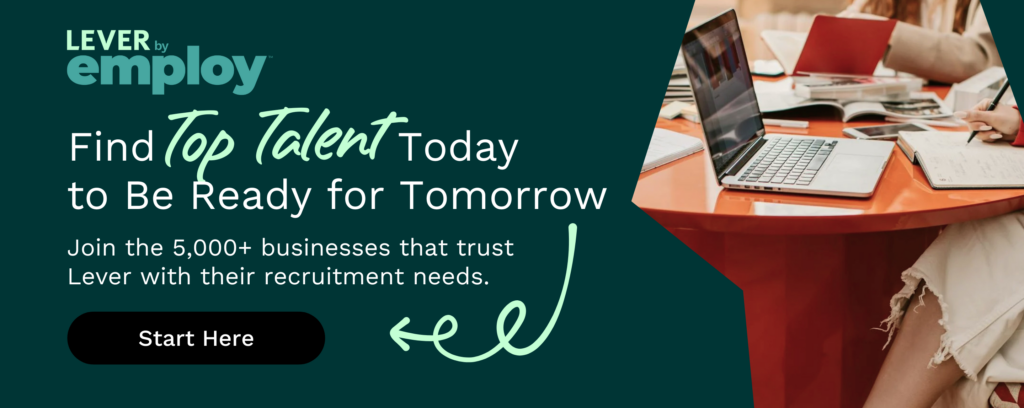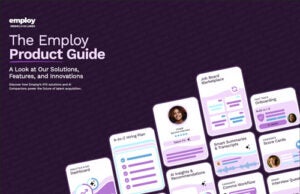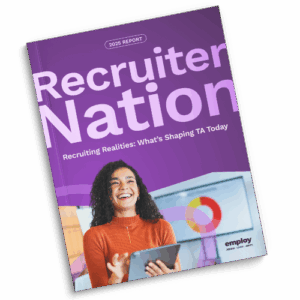We at Lever recently co-hosted an amazing panel discussion on how to build a diversity, equity, and inclusion (DEI) program from scratch. In our roundtable chat, our speakers shared incredible advice and insights on a topic that is a top business priority for so many of us.
The panel included:
- Bar the Door Founder and CEO Katee Van Horn
- Shopify Inclusion & Employee Experience Lead Shavonne Hasfal-Mcintosh
- Sheryl Sandberg & Dave Goldberg Family Foundation VP of People and Managing Director Raena Saddler
The trio of experts covered a lot of ground, but simply didn’t have the time to answer all of the DEI questions they received. To continue the dialogue on this important topic, we’ve rounded up the 10 common DEI questions they get asked here along with in-depth answers.

1) What is your biggest piece of advice for getting started with DEI?
Katee’s advice is two-fold. First, don’t try to boil the ocean. Second, just start somewhere.
This work is huge and can become overwhelming if you try to tackle everything at once. Create a list of all the things you want to tackle DEI-wise and start with one or two.
For instance, leverage your teams to build employee resource groups (ERGs), use more inclusive language in job descriptions/postings, or create a flex work program.
Every step of your DEI efforts can help build an environment that is more inclusive and welcoming to underrepresented groups.
Finally, ask for help from those who have done this in other organizations. Katee says she is always open to a conversation if it will help to move this work along in a company.
2) How do we get the entire company—including our leadership team—on board with DEI initiatives?
Katee’s one-two punch is the data and the humans. The data will tell the story of why DEI is not just a “nice-to-have.” The human aspect will make it more real for people who may not understand that the employee experience is not the same for everyone at the company.
We need to bring everyone along, so it’s vital to meet people where they are, per Katee.
This can be daunting and exhausting at times, but the more we create awareness, the more we open people’s eyes to how great the org could be for everyone, Katee said.
For data, Raena suggests looking at LeanIn.Org’s annual Women in the Workplace report with McKinsey & Company, which is the largest data set on the state of women in corporate America.
We know from this year’s report that, when senior leaders prioritize diversity and encourage DEI, fewer employees think about leaving — and employee happiness increases.
Companies need to start treating their DEI initiatives like a real business priority — and the report includes concrete steps companies can take to accomplish this.
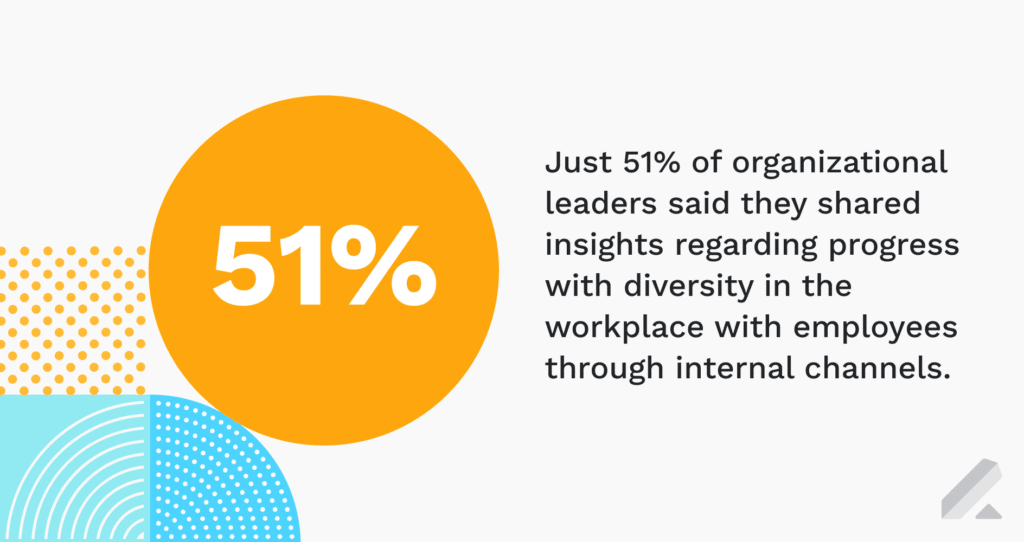
3) What would you say is the most difficult part of implementing a DEI program?
Katee thinks the most difficult part is being patient and having empathy.
You cannot flip the switch and make everything perfect. We are all at different places in the journey and each person has different needs within this work.
As you start to unpack all of the work involved in creating an inclusive culture where everyone can do their best work, you start to realize that what may work in one region or site, may not work in another.
You also realize that the challenges for one population aren’t the same for others. We want to personalize the employee experience while being consistent and fair to all.
So, give yourself the space to try new things and fail. And just remember that on the other side of every program or pilot there are humans. Get to know the humans that you are doing this work for. That will make the hard days easier.
4) Who is involved in the membership of your diversity task forces? What types of responsibilities does this group take on?
The Sheryl Sandberg & Dave Goldberg Family Foundation started with a volunteer-based group that represented a variety of functions, levels, and backgrounds from within the team.
The Foundation first identified the different types of problems they wanted solve as a group.
These bodies of work ultimately fell into two distinct categories:
- 1) Internal work streams they wanted to build to foster a more inclusive culture
- 2) External work (things they wanted to do to make sure the work they put out into the world was more inclusive and representative of people of all backgrounds)
The organization split the ownership across these tasks to progress across all fronts, and brought updates back to the working group.
Raena suggests making sure that members’ contributions to the DEI taskforce are included in their goals and performance reviews.
This sends the message from the top-down that this is a valued, important work stream, and elevates the importance of this work as a core part of each person’s responsibilities.
This is key to keeping these contributions from turning into “office housework” that serves the broader team without serving the individuals doing the work.

5) How do we go about launching and growing employee resource groups? Do they form organically, or does HR create them? How do you get employees excited about them so they engage?
Shopify launched their employee resource group program to the organization and allowed employees to organically come together to formalize.
Prior to having formalized ERGs, they used Slack to create virtual community channels based on shared dimensions of diversity.
For instance, they had Slack channels for women, parents, and people of color. Shopify’s first ERGs were born out of some of those Slack channels.
Shavonne suggests crafting a framework that will formalize ERGs, set them up for success, and allow them to make an impact. You will want to:
- Clarify the purpose and scope of each ERG created
- Build alignment to your overarching DEI strategy
- Define the principle activities tied to each ERG
- Note where ERGS will support the organization
- Define the stakeholders outside of the DEI team
- Decide on a defined annual budget for all ERGS
For persons who may not share in a particular identity, interest, or goal, ERGs are avenues for them to develop an understanding of that group’s lived experience, so they may learn about the challenges they confront and become allies.
6) We struggle with wanting to represent employees from underrepresented populations, but we also don’t want to tokenize anyone. How do we approach people to ask them to be in our photos without making them feel that way?
Shavonne suggests that you be open and honest about what you are trying to achieve in terms of your diversity initiatives and make it clear that your efforts are intentional.
Build a culture where you aren’t just tapping into your underrepresented worker population for these initiatives — but are also engaging with them in meaningful ways.
Raena adds that you should make sure participation is very clearly optional (i.e., not mandatory in any way) and that it’s okay to decline.
It’s important to realize that you’re asking the people from underrepresented backgrounds to do something that you’re not asking their white colleagues to do.
So, be clear that it’s completely fine if they don’t want to participate for any reason.
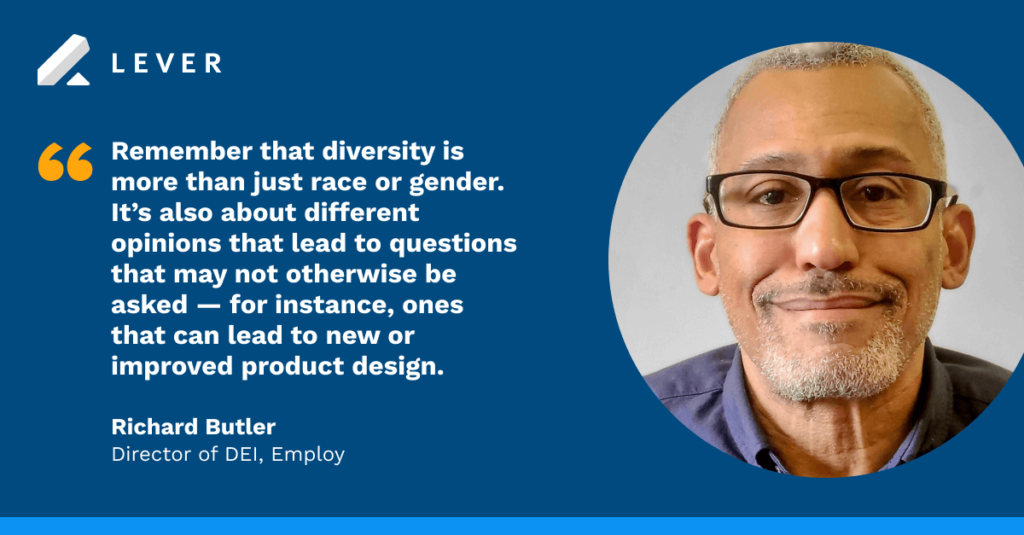
7) Can you give an example on how to “bake” diversity into a job description?
We know diversity on teams leads to new ideas and better results. Raena points out that everyone, in every role, on every team is responsible for building an inclusive and respectful culture.
For each position’s job description, think through the ways that DEI is important facets in that role — and include it in the responsibilities and requirements.
Raena shared two examples from the Sheryl Sandberg & Dave Goldberg Family Foundation:
- Their Head of Product will “create compelling, inclusive digital experiences that resonate across broad audiences”, and a requirement for applicants is having a “passion for building inclusive web experiences where people of all backgrounds see themselves represented in your work.”
- Their Head of Marketing needs to have a “strong understanding of the issues critical to women, with the ability to build inclusive, resonant messaging narratives.”
The Foundation also makes their commitment to DEI explicit in all of their job postings.
Specifically, the org tells applicants, “We want people of all backgrounds to see themselves represented and included in our work, so we actively seek to diversify our team and bring more voices to the table. All applicants are welcome.”
Beyond that, Raena suggests making your job descriptions as inclusive and broadly appealing to a wide array of candidates as possible.
First, remove as much gendered or exclusionary language as you can.
Second, do a thorough sweep of your job descriptions to make sure you’ve separated the “required” skills and the “nice-to-have” skills. Women are less likely to apply if they don’t meet 100 percent of the job criteria.
8) What are some creative ways to proactively source candidates from underrepresented communities?
Some of Shavonne’s top tips include:
- Tapping into the People Also Viewed section on LinkedIn
- Responding to both positive and negative reviews on Glassdoor
- Looking at underrepresented communities on GitHub
- Embracing Slack communities as a resource for candidates
- Looking closely at Twitter lists
- Getting creative with search strings
- Connecting with people in ERGs to suggest networks you can tap into
- Baking diversity and inclusion into your job descriptions
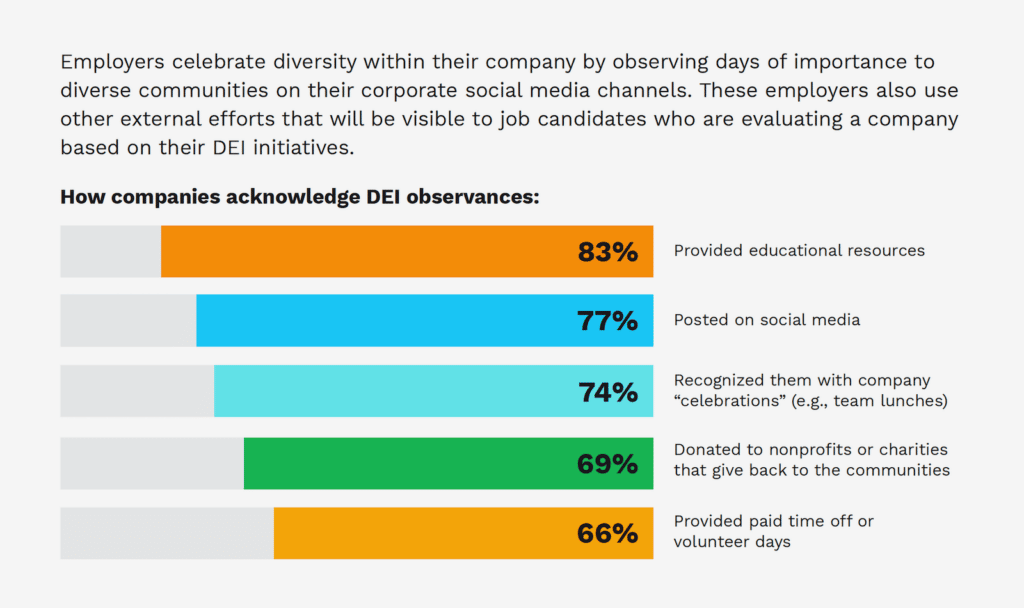
9) Do you have any tips for recruiting for diversity when your company is located in a primarily Caucasian city, and you don’t have the funding to offer relocation?
When we talk about the Future of Work, we hear a lot about remote work becoming the norm. Shavonne points out that it allows you to tap into talent that lay outside of your immediate city and opens you up to talent that falls across a broader range of representation.
Set remote workers up for success and help them feel like part of the team by ensuring you have a workplace culture that is conducive to remote work. Look into tools like Slack, to facilitate virtual community building, and Zoom, to conduct virtual meetings.
10) How do you counteract comments from leadership such as, “we just hire or promote the best person of the job, regardless of race or gender”?
Shavonne said she thinks it’s important to avoid creating a hiring culture where people think that we need to lower the bar in order to hire people from underrepresented groups.
However, we need to highlight the importance of a diverse candidate pipeline for all roles, and a recruitment process that does not include systemic barriers to entry for people from underrepresented groups.
Find out how you can hire more diverse, qualified candidates and meet your DEI goals with LeverTRM, our complete ATS and CRM solution for today’s talent acquisition teams.
